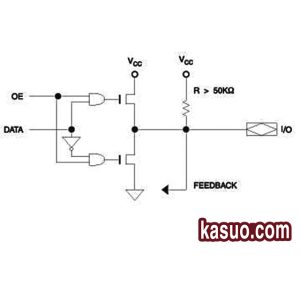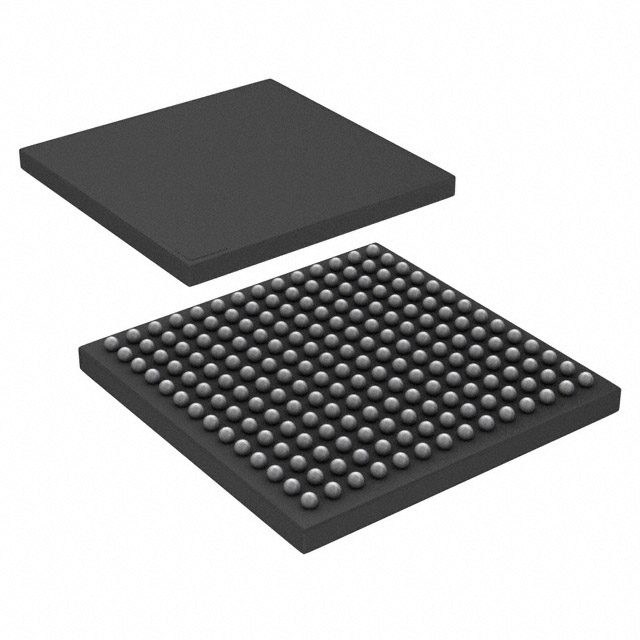ATF22V10B-10GM/883 datasheet & price | pdf
- Brands: Microchip Technology
- Download: ATF22V10B-10GM/883 Datasheet PDF
- Price: inquiry
- In Stock: 12,430
- MountingType: Through Hole
- Programmable Type: EE PLD
- Number of Macrocells: 10
- Package: 24-CDIP (0.300, 7.62mm)

FREE delivery for orders over HK$250.00

Quick response, quick quotaton

Flash shipment,no worries after sales

Original channel,guarantee of the authentic products
ATF22V10B Pinout Equivalent Circuit

1:Overview of the ATF22V10B:
The ATF22V10B is a programmable logic device (PLD) developed and launched by Atmel, utilizing mature electrically erasable flash memory technology. The ATF22V10B can achieve a minimum power consumption of 10 mA. The ATF22V10B operates at a supply voltage of 5V. It includes 10 macrocells, each of which can be configured as combinational logic (such as AND gates, OR gates) or sequential logic (such as flip-flops). It also supports user-defined logic functions and state machine design. The ATF22V10B provides 12 to 24 I/O pins (the exact number depends on the package), suitable for connecting peripherals such as microcontrollers, sensors, and displays.
2:ATF22V10B Important pin function definition:
| Pin Number | Pin Name | Description |
|---|---|---|
| 1 | VCC | Power Supply: +5V power input. |
| 2–13 | I/O 0–I/O 11 | General Purpose I/O Pins: Bidirectional I/O, controlled by internal logic configuration. |
| 14 | GND | Ground: Power supply ground connection. |
| 15 | TMS | JTAG Test Mode Select: Controls JTAG programming mode. |
| 16 | TCK | JTAG Test Clock: Synchronizes JTAG data transfer. |
| 17 | TDI | JTAG Test Data Input: Serial input for programming data. |
| 18 | TDO | JTAG Test Data Output: Serial output for programming data. |
| 19 | nCONFIG | Configuration Control: Active-low signal to enter programming mode. |
| 20 | nSTATUS | Status Signal: Active-low signal indicating programming errors or busy state. |
| 21 | CONF_DONE | Configuration Done: Active-high signal indicating successful configuration. |
| 22–23 | NC | No Connection: No internal connection; leave unconnected. |
3.Partial circuit diagram of the ATF22V10B component.
The following is a partial circuit diagram of the component. The ATF22V10B has internal input and I/O pull-up resistors. Therefore, when the ATF22V10B is not externally driven at the input or I/O, the pin will default to being pulled up to VCC. The ATF22V10 has relatively weak active pull-up resistors internally, which can be TTL-compatible. The relevant circuit diagram is shown below.


4:Alternative model recommendation
When considering alternatives, priority is given to the same series of alternatives. ATF22V10B Similar CPLD alternatives are ATF22V10C and ATF22V10B-10JC.
ATF22V10C:
ATF22V10C functions are compatible with ATF22V10B, but the process or packaging may be optimized. Like ATF22V10B, it is powered by 5V power supply and retains JTAG programming interface.

ATF22V10B-10JC:
ATF22V10B-10JC is the industrial version of ATF22V10B, with an extended temperature range (-40 C ~ 125 C). This model can be selected for applications where temperature requirements are required, and it is suitable for upgrading industrial equipment.

LC4064V:
The LC4064V is a complex programmable logic device (CPLD) developed by Lattice Semiconductor. Compared to the ATF22V10B, it is better suited for low-power, small-package logic control scenarios. The LC4064V is often used to replace traditional logic gate circuits or implement simple state machines. The LC4064V features more macrocells, supporting combinational logic, sequential logic (such as counters and state machines), and simple interface circuits.

EPM240:
The EPM240 is a more complex programmable logic device (CPLD) than the ATF22V10B, belonging to the MAX II series. The EPM240 features more macrocells, enabling lower-cost and power-efficient logic control designs. It has 256 macrocells, operates at a voltage of 3.3V, and supports level compatibility at 2.5V and 1.8V. For 5V system compatibility, level conversion is required. The EPM240 offers various package structures, including PDIP-24, SOIC-24, and TQFP-44.





















